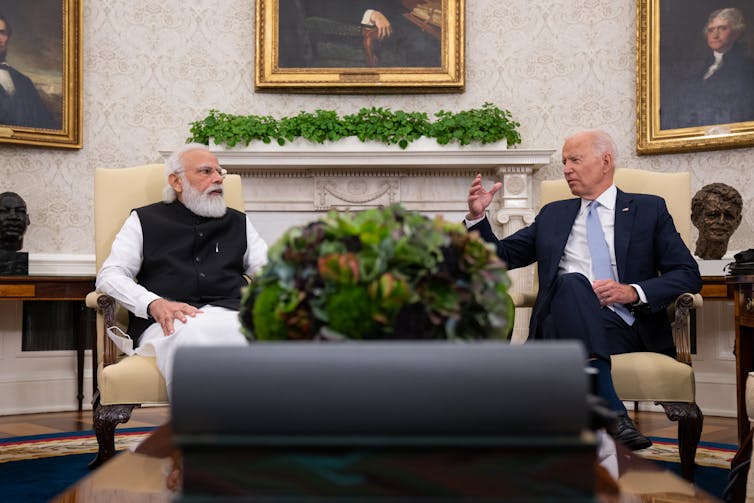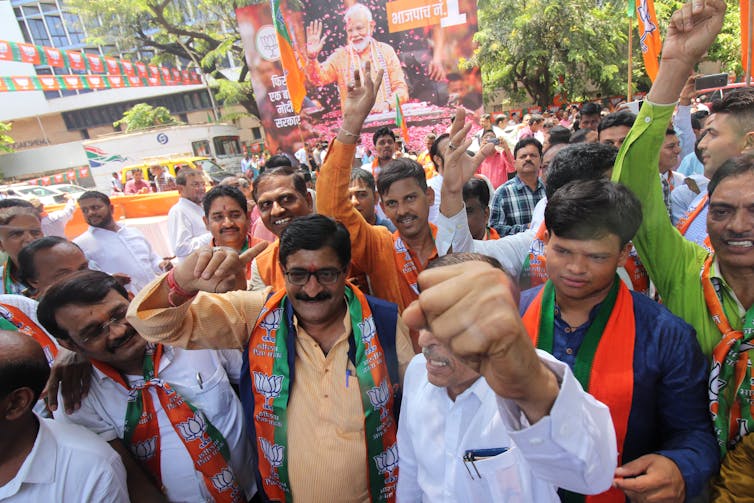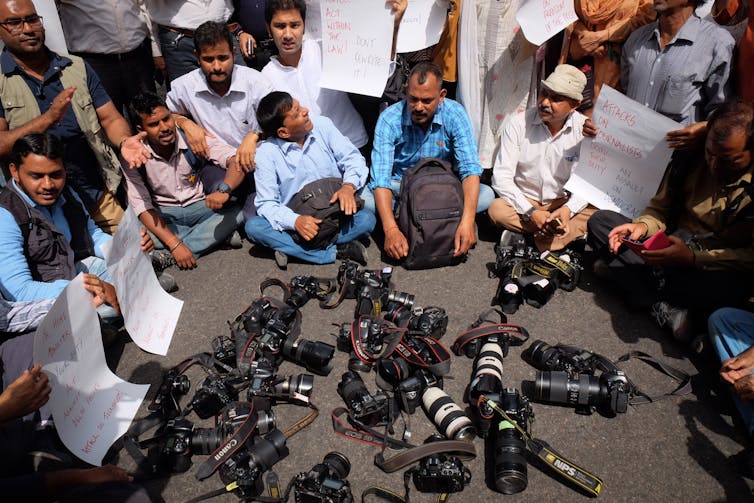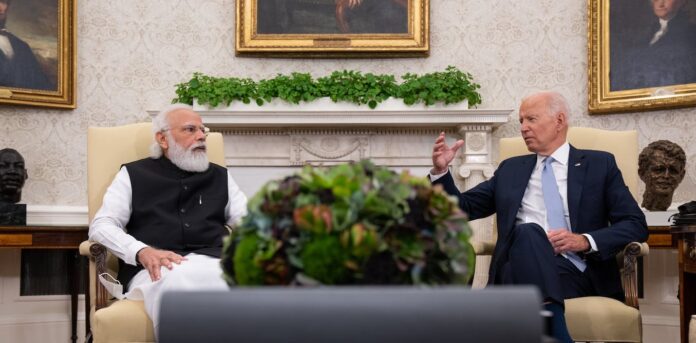Mr. Modi comes to Washington – The Indian prime minister’s visit could strengthen ties with the US, but also raises some delicate issues

By Sumit Ganguly, Indiana University and Larry Diamond, Stanford University
Indian Prime Minister Narendra Modi plans to attend his first state visit at the White House on June 22, 2023, marking a historic moment that could potentially influence relations between India and the United States for years.
Modi, 72, was first elected prime minister in 2014 and then reelected in 2019. Since then, Modi has earned an international reputation as an unyielding Hindu nationalist and a strongman who leads with tight control.
We are political scientists who have written extensively on U.S. foreign policy and the relationship between the U.S. and India, as well as democracy.
Over the past few years, particularly since Modi’s 2019 reelection, some scholars and analysts have written about democracy declining in India. This is partly because of new regulations and government pressure to censor news media and free speech critical of Modi.
The U.S. does not routinely give state visit invitations to world leaders. Modi is also set to address Congress, another honor that is rarely granted to a visiting foreign dignitary.
But in our view, the U.S. is courting India because it needs the country to serve as a strategic bulwark against China’s expansionist policies in Asia.

Understanding Modi
Modi grew up in India’s western state of Gujarat, in fairly modest circumstances. He had a long career in local and state politics and developed a reputation as a tough-minded, but able, politician.
A longtime member of the Rashtriya Swayamsevak Sangh, a militant Hindu political organization, Modi has been characterized by Indian political observers and foreign analysts alike for his strong Hindu nationalist views.
Hinduism is the most popular religion in India,, but people there also practice Christianity, Sikhism, Buddhism and Jainism.
Hindu nationalism has been on the rise in recent years, spawned by some people’s belief that India is and should be a predominantly Hindu nation, and that its policies should reflect that.
At times, this rise in Hindu nationalism has taken a violent turn.
When Modi was the chief minister of Gujarat in February 2002, Hindu zealots carried out a riot there that killed more than 1,000 people – most of whom were Muslim. Modi has denied any role in this event, but police have said that the violence happened with tacit approval of the state government, including Modi.
The U.S. subsequently denied Modi a visitors visa in 2005.
But Modi has been a widely popular prime minister, with a 78% approval rating as of February 2023.

US and India ties
Ties between the U.S. and India grew under Modi’s leadership, especially around issues of security and defense cooperation.
India, for example, has purchased a substantial amount of sophisticated weaponry from the U.S. over the last few years. It has also signed three important defense agreements with the U.S. during this same time frame.
Defense analysts say that these agreements will significantly improve military cooperation between the two countries.
India has also become, albeit somewhat fitfully, a more active participant in the Quadrilateral Security Dialogue, which is a loose, four-country initiative that also involves the U.S., Japan and Australia. The group routinely meets to discuss security and trade, and occasionally carries out military exercises together.
These countries also share concern about China’s growing power in Asia. While India and China have an established trading relationship, different security issues – especially related to the disputed Himalayan border between the countries – have dogged diplomatic relations between them for nearly a decade.
An important point of contention between the U.S. and India involves India’s tepid response to Russia’s invasion of Ukraine in February 2022.
India has been reluctant to publicly criticize Russia in part because of its acute dependence on Moscow for weapons technology.. Modi has been in regular touch with Russian President Vladimir Putin, but has not condemned the invasion, only going so far as to say that now is “not an era for war.”

Questions dogging the visit
The Biden administration’s decision to invite Modi for a state visit is clearly designed to send a message to New Delhi about the significance that it attaches to the emerging U.S.-India partnership and India’s potential role in containing China’s growing strategic reach across Asia.
Modi is running for reelection in 2024. So, especially if the visit yields any tangible benefits for India, the meeting could result in some electoral gains at home.
Biden and Modi will likely discuss how to continue growing the countries’ relationships and how to respond to China’s influence – as well as the ticklish question of India’s position on the Ukraine crisis.
The U.S. is aiming to sell India armed drones, and Biden is also likely to offer India GE jet engine manufacturing technology. This would give India’s defense capabilities a significant boost and would also lessen its dependence on Russian military technology.
Questions about a weakening democracy in India, though, as well as violence against minorities, may come to dog the relationship.
Hindu extremist groups have increasingly attacked and harassed minorities, most notably Muslims, over the last few years.
Modi’s administration has also received international attention for its curbs on the freedom of the press, attempts to muzzle nonprofit groups and efforts to undermine the political opposition.
Because questions of democracy and the Ukraine war are so fraught, we believe that these issues could stall more political agreements and closer ties between the U.S. and India. How Biden and Modi tackle these various subjects during the visit could help determine the course of U.S-.India relations.![]()
Sumit Ganguly, Distinguished Professor of Political Science and the Tagore Chair in Indian Cultures and Civilizations, Indiana University and Larry Diamond, Mosbacher Senior Fellow of Global Democracy at the Freeman Spogli Institute for International Studies, Senior Fellow at the Hoover Institution, Stanford University
This article is republished from The Conversation under a Creative Commons license. Read the original article.



